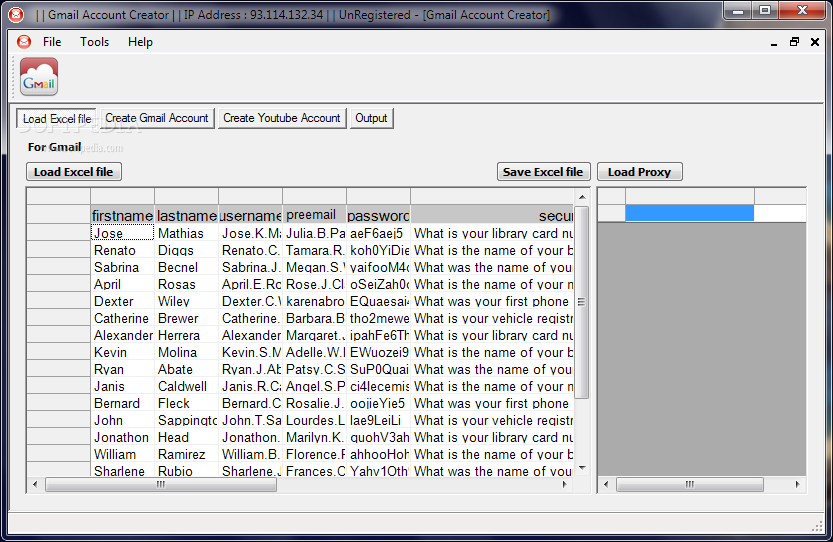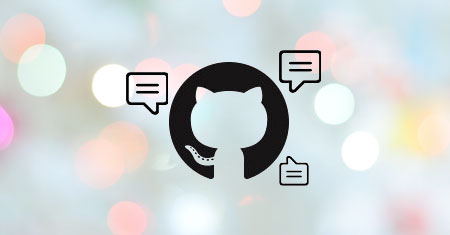The Hello World project is a time-honored tradition in computer programming. It is a simple exercise that gets you started when learning something new. Let’s get started with GitHub!
Gmail Account Creator Free
You’ll learn how to:
So having one account, you can automatically have many other mail accounts to Google. Also, this Gmail generator is known under the following names: Googlemail Trick, Gmail dot Trick, Fake gmail generator, Fake gmail. We do not store your gmail address. Useful links: Dots don't matter in Gmail addresses and Official Gmail Blog. Step 1: Create your Bot’s Twitter Account. I like to do this first because it gives your bot a sense of identity while you work on it. You probably already know how to sign up for a Twitter account, so here are few tips: Use the “infinite gmail” trick for your bot’s email address. Great gmail accounts creating software tool that can create unlimited phone verified accounts from any country automatically and allow you to import proxies.
- Create and use a repository
- Start and manage a new branch
- Make changes to a file and push them to GitHub as commits
- Open and merge a pull request
What is GitHub?
GitHub is a code hosting platform for version control and collaboration. It lets you and others work together on projects from anywhere.
This tutorial teaches you GitHub essentials like repositories, branches, commits, and Pull Requests. You’ll create your own Hello World repository and learn GitHub’s Pull Request workflow, a popular way to create and review code.
No coding necessary
To complete this tutorial, you need a GitHub.com account and Internet access. You don’t need to know how to code, use the command line, or install Git (the version control software GitHub is built on).
Tip: Open this guide in a separate browser window (or tab) so you can see it while you complete the steps in the tutorial.
Step 1. Create a Repository
A repository is usually used to organize a single project. Repositories can contain folders and files, images, videos, spreadsheets, and data sets – anything your project needs. We recommend including a README, or a file with information about your project. GitHub makes it easy to add one at the same time you create your new repository. It also offers other common options such as a license file.
Your hello-world repository can be a place where you store ideas, resources, or even share and discuss things with others.
To create a new repository
- In the upper right corner, next to your avatar or identicon, click and then select New repository.
- Name your repository
hello-world. - Write a short description.
- Select Initialize this repository with a README.
Click Create repository.
Step 2. Create a Branch
Branching is the way to work on different versions of a repository at one time.
By default your repository has one branch named main which is considered to be the definitive branch. We use branches to experiment and make edits before committing them to main.
When you create a branch off the main branch, you’re making a copy, or snapshot, of main as it was at that point in time. If someone else made changes to the main branch while you were working on your branch, you could pull in those updates.
This diagram shows:
- The
mainbranch - A new branch called
feature(because we’re doing ‘feature work’ on this branch) - The journey that
featuretakes before it’s merged intomain
Gmail Account Creator Bot Github Bot
Have you ever saved different versions of a file? Something like:
story.txtstory-joe-edit.txtstory-joe-edit-reviewed.txt
Branches accomplish similar goals in GitHub repositories.
Here at GitHub, our developers, writers, and designers use branches for keeping bug fixes and feature work separate from our main (production) branch. When a change is ready, they merge their branch into main.
To create a new branch
- Go to your new repository
hello-world. - Click the drop down at the top of the file list that says branch: main.
- Type a branch name,
readme-edits, into the new branch text box. - Select the blue Create branch box or hit “Enter” on your keyboard.

Now you have two branches, main and readme-edits. They look exactly the same, but not for long! Next we’ll add our changes to the new branch.
Step 3. Make and commit changes
Bravo! Now, you’re on the code view for your readme-edits branch, which is a copy of main. Let’s make some edits.
On GitHub, saved changes are called commits. Each commit has an associated commit message, which is a description explaining why a particular change was made. Commit messages capture the history of your changes, so other contributors can understand what you’ve done and why.
Make and commit changes
- Click the
README.mdfile. - Click the pencil icon in the upper right corner of the file view to edit.
- In the editor, write a bit about yourself.
- Write a commit message that describes your changes.
- Click Commit changes button.
These changes will be made to just the README file on your readme-edits branch, so now this branch contains content that’s different from main.
Step 4. Open a Pull Request
Nice edits! Now that you have changes in a branch off of main, you can open a pull request.
Pull Requests are the heart of collaboration on GitHub. When you open a pull request, you’re proposing your changes and requesting that someone review and pull in your contribution and merge them into their branch. Pull requests show diffs, or differences, of the content from both branches. The changes, additions, and subtractions are shown in green and red.
As soon as you make a commit, you can open a pull request and start a discussion, even before the code is finished.

By using GitHub’s @mention system in your pull request message, you can ask for feedback from specific people or teams, whether they’re down the hall or 10 time zones away.
You can even open pull requests in your own repository and merge them yourself. It’s a great way to learn the GitHub flow before working on larger projects.
Open a Pull Request for changes to the README

When you create a branch off the main branch, you’re making a copy, or snapshot, of main as it was at that point in time. If someone else made changes to the main branch while you were working on your branch, you could pull in those updates.
This diagram shows:
- The
mainbranch - A new branch called
feature(because we’re doing ‘feature work’ on this branch) - The journey that
featuretakes before it’s merged intomain
Gmail Account Creator Bot Github Bot
Have you ever saved different versions of a file? Something like:
story.txtstory-joe-edit.txtstory-joe-edit-reviewed.txt
Branches accomplish similar goals in GitHub repositories.
Here at GitHub, our developers, writers, and designers use branches for keeping bug fixes and feature work separate from our main (production) branch. When a change is ready, they merge their branch into main.
To create a new branch
- Go to your new repository
hello-world. - Click the drop down at the top of the file list that says branch: main.
- Type a branch name,
readme-edits, into the new branch text box. - Select the blue Create branch box or hit “Enter” on your keyboard.
Now you have two branches, main and readme-edits. They look exactly the same, but not for long! Next we’ll add our changes to the new branch.
Step 3. Make and commit changes
Bravo! Now, you’re on the code view for your readme-edits branch, which is a copy of main. Let’s make some edits.
On GitHub, saved changes are called commits. Each commit has an associated commit message, which is a description explaining why a particular change was made. Commit messages capture the history of your changes, so other contributors can understand what you’ve done and why.
Make and commit changes
- Click the
README.mdfile. - Click the pencil icon in the upper right corner of the file view to edit.
- In the editor, write a bit about yourself.
- Write a commit message that describes your changes.
- Click Commit changes button.
These changes will be made to just the README file on your readme-edits branch, so now this branch contains content that’s different from main.
Step 4. Open a Pull Request
Nice edits! Now that you have changes in a branch off of main, you can open a pull request.
Pull Requests are the heart of collaboration on GitHub. When you open a pull request, you’re proposing your changes and requesting that someone review and pull in your contribution and merge them into their branch. Pull requests show diffs, or differences, of the content from both branches. The changes, additions, and subtractions are shown in green and red.
As soon as you make a commit, you can open a pull request and start a discussion, even before the code is finished.
By using GitHub’s @mention system in your pull request message, you can ask for feedback from specific people or teams, whether they’re down the hall or 10 time zones away.
You can even open pull requests in your own repository and merge them yourself. It’s a great way to learn the GitHub flow before working on larger projects.
Open a Pull Request for changes to the README
Click on the image for a larger version
| Step | Screenshot |
|---|---|
| Click the Pull Request tab, then from the Pull Request page, click the green New pull request button. | |
In the Example Comparisons box, select the branch you made, readme-edits, to compare with main (the original). | |
| Look over your changes in the diffs on the Compare page, make sure they’re what you want to submit. | |
| When you’re satisfied that these are the changes you want to submit, click the big green Create Pull Request button. | |
| Give your pull request a title and write a brief description of your changes. |
When you’re done with your message, click Create pull request!
Tip: You can use emoji and drag and drop images and gifs onto comments and Pull Requests.
Step 5. Merge your Pull Request
In this final step, it’s time to bring your changes together – merging your readme-edits branch into the main branch.
- Click the green Merge pull request button to merge the changes into
main. - Click Confirm merge.
- Go ahead and delete the branch, since its changes have been incorporated, with the Delete branch button in the purple box.
Celebrate!
By completing this tutorial, you’ve learned to create a project and make a pull request on GitHub!
Here’s what you accomplished in this tutorial:
- Created an open source repository
- Started and managed a new branch
- Changed a file and committed those changes to GitHub
- Opened and merged a Pull Request
Take a look at your GitHub profile and you’ll see your new contribution squares!
To learn more about the power of Pull Requests, we recommend reading the GitHub flow Guide. You might also visit GitHub Explore and get involved in an Open Source project.
Tip: Check out our other Guides, YouTube Channel and On-Demand Training for more on how to get started with GitHub.
Last updated July 24, 2020
